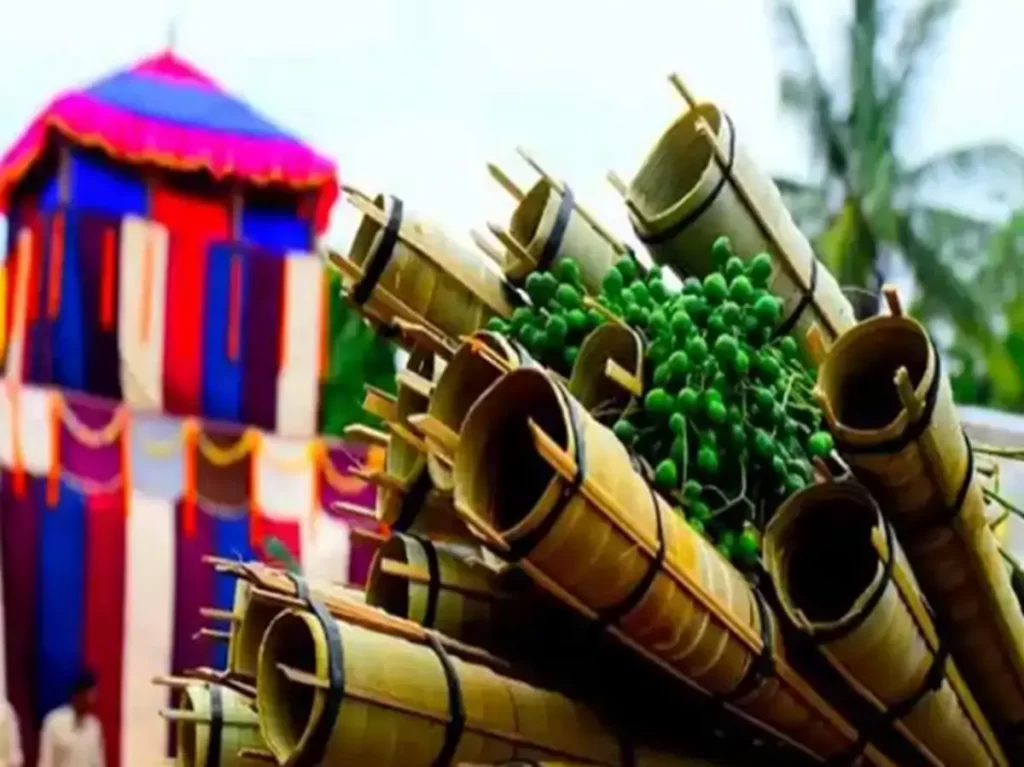Have you heard these words for the very first time?? Don’t panic!!
The promoters and directors of Ladlika are here to make the scene real for you! Our promoters and directors have been born and brought up in this beautiful land, making it easy for them to explain the scenario.
As the name suggests, at least by now you know that we are talking about some sort of festival. Let’s go by the literal meaning: Chariot is “Ratha” (in Sanskrit), and Tupki is the main playing device, which is formed of hollow bamboo and decorated with palm leaves and colour papers. Goncha is the festival that is celebrated prior to one of the major festivals of this tribal area in India, known as Bastar.
This festival relates back to ancient history, which is involved with Lord Jagannath and Bastar Dussehra, which shall be discussed in other blogs.
What is Tupki? How is it used?
The tradition of Tupki is the guard of honor of Shri Jagannath and is practiced and enjoyed in this particular area of Jagdalpur in the entire country of India. Jagdalpur is the main city in the district of Bastar, which falls in the state of Chhattisgarh, India. Tupki is shaped like an aiming device, and the bullet used to aim is also natural, which is the fruit of one of the tribal plants and is basically smaller in size like a bullet. People of all age groups come out and assemble on the streets and ground and aim each other with tupki. The atmosphere lights up with joy, enjoyment, and laughter. Even if you end up being the target of somebody’s tupki, you rejoice by laughing hard, as it does not cause any sort of discomfort or injury.
It’s actually fun!!
History of the Festival
Bastar is tribal land; every festival is intertwined with elements of nature.
Celebrated for over 800 years, Goncha and the chariot procession of Bastar were started by the rulers of the Chalukya dynasty. In 1400 c, Maharaja Purushottam Dev of Bastar visited Jagannath Puri in Odisha. The king of Odisha gifted Maharaja Purushottam Dev, a 16-wheeled chariot, and gave him the title of ‘Rathadhipati’. With the chariot, 360 Aranyak Brahmin families from Odisha came to Bastar under the homage of Maharaja Purushottam Dev. These 360 families brought with them several idols of Lord Jagannath, Balbhadra, and Subhadradevi to Bastar, Chhattisgarh. 22 idols of Lord Jagannath, Balbhadra, and Subhadradevi were consecrated in a single temple at Jagannath Temple in Bastar.
Rathayatra (chariot procession) of Odisha is known as ‘Gundicha’, which over time got converted to ‘Goncha’ in Bastar, Chhattisgarh.
Of the 16-wheeled giant chariot, Maharaja Purushottam Dev offered its four wheels to Lord Jagannath as homage and returned to Bastar with a 12-wheeled chariot. Out of these 12 wheels, it was again divided into an eight-wheeled chariot and a four-wheeled chariot. Since then, the ritual of Rathayatra (chariot procession) during Goncha and Bastar Dusshera in Chhattisgarh has started.
Spare a few moments from your busy schedule and have the experience of this festival cherished around the month of June – July by visiting this part of Incredible India!

